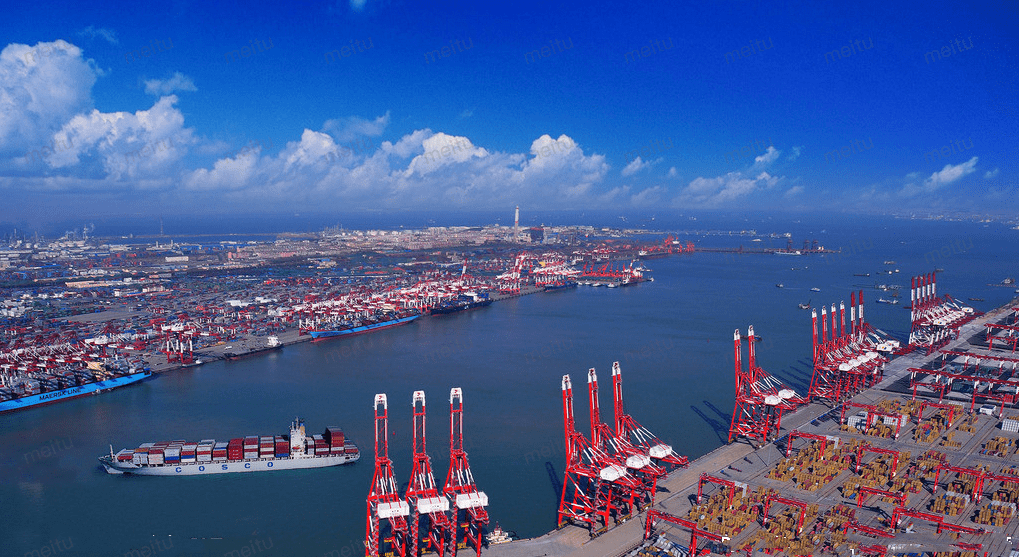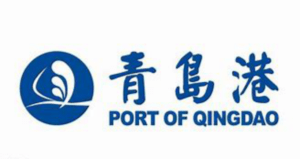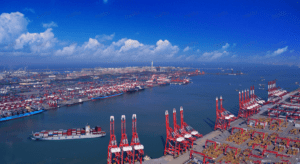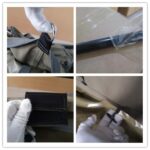

In the international shipping market under the impact of the epidemic, it is nothing new that “one container is hard to get”, and foreign trade enterprises are even more worried about “one container is hard to get”.
As China’s second largest foreign trade port in shandong Qingdao port, relying on the shandong port integration reform brings bigger platform, more opportunities, with the addition of container routes, increase the overtime ship, create empty containers imported shall quickly, “set to”, iron sea transport, such as series of “combination”, to cope with the unprecedented market volatility.
As the saying goes, “Change is always accompanied by opportunity”, these measures not only stabilize the shipping logistics chain, but also enable Qingdao port to win a more stable hub position and a stronger radiation capacity. The moment of Qingdao port, in the period of history’s most busy berthing ship quantity at a record high, daily average of more than 60000 containers in the port of loading and unloading, CGM, Mediterranean, Eva, wan hai shipping industry giants such as transport capacity, alibaba, bo international shipping and the new “owner” are choice in Qingdao port opened point-to-point express service.
In the first half of this year, Qingdao port ranked fourth in cargo throughput and fifth in container throughput. The person in charge of the dock regrets that this kind of busy has become normal, there is no difference between low season and high season.
The difficulty of resolving the shortage of shipping space
Under the background of “difficult to find a cabin”, foreign trade bosses ridicule, now in order to grab the space, it is really each show his talents.
This year, waiting times for container ships to berth have more than doubled since 2019, according to data. As of August 24, more than 362 large carrier ships were berthed outside the port. Take the trans-Pacific route as an example, the original six-week round-trip weekly service needs six ships, but due to the port congestion delay of more than one week, the whole cycle is prolonged, maintaining the same service frequency requires at least one more ship.
Therefore, the shipping capacity of shipping companies is of great significance to smooth export trade. Whoever strives for more route network will move the key of global shipping resource allocation.
“Since the beginning of this year, China’s exports to Southeast Asia, Europe and the United States have increased very rapidly. So many goods need to be shipped out, but the space is limited, and the impact of the epidemic has made the transportation capacity very tight.” Zhang Jun, deputy general manager of Qingdao Qianwan Container Terminal Company, shandong Port, said, “In order to guarantee the export of foreign trade goods in Shandong and along the Yellow River basin, we have adopted many measures. Two is to increase the foreign trade overtime ship, every month there are 40 to 50 overtime ship; Third, shippers seeking to hire ships open routes to Qingdao port and take out the goods from Shandong.”
In response to the rising demand for international shipping caused by the epidemic and the shortage of shipping space, Qingdao Port added 15 new container routes in the first half of this year, expanding and improving the supporting development pattern of dry and branch lines, and supporting the rapid growth of transit containers. At the same time, Qingdao Port actively coordinated with shipping companies to open additional overtime vessels, and with the strong support of customs and other departments, created a new mode such as rapid inspection and release of imported empty containers, fully guaranteed the empty container reserve at ports and the demand for rapid use of containers by enterprises, effectively guaranteed the demand for export containers by enterprises, and realized a win-win situation.
On August 21, Qingdao port in Shandong province opened alibaba’s western route to the US, which takes only 15 days from Qingdao to major ports on the WEST coast of the US, speeding up the export of electronic products, machinery and equipment, clothing and other e-commerce products. On July 30, Chang Fan, the world’s largest 24,000-TEU class ultra-large container ship built by Samsung Heavy Industries for Eva Shipping, made its maiden voyage to Qingdao Port in Shandong Province. It is the first of 10 24,000-teU class ultra-large container ships built by Eva Shipping. On July 28, Wanhai Shipping, one of Asia’s largest carriers, also opened its first u.s.-West Express line at Qingdao port in Shandong province, shortening the journey time by nearly five days compared with the regular u.s.-West route.
Cma, Mediterranean, Evergreen, Wanhai and other international shipping companies are coming, which is not only the influence of Qingdao’s export-oriented economy, but also the siphon effect of Qingdao port’s ultra-high efficiency. On August 24, during the operation of “Mediterranean Martina”, the single operation efficiency of bridge crane in Qingdao Port of Shandong port reached 52.1 natural container per hour, breaking the world record of automatic terminal loading and unloading for the seventh time. Such high efficiency guaranteed the shipping schedule of shipping companies and the import and export demand of foreign trade enterprises.
“Qingdao Port, a port in Shandong province, has constantly innovated efficiency models such as hot docking and low visibility pilotage, laying a foundation for shipping companies to catch up with the schedule.” Li Qifeng, the general representative of port in China area of Wan Hai Shipping, chose Qingdao port for the first voyage.
To ease shipping costs
In the second half of the shipment peak, how to reduce the cost of international freight, related to the survival of foreign trade enterprises.
“Export companies with low value of goods are basically lying flat. Some companies that export tires and furniture have kept their goods in factories for several months.” Qingdao United Fenghang supply chain management Co., LTD. General manager Zhang Jian said.
Like him fretting freight owners, freight forwarding enterprises are not a few. In the production of false eyelashes accounted for 70% of the world’s level, although orders from Europe and the United States continue, but in the face of tight shipping space and high freight rates, some enterprises had to suspend orders.
Global port congestion and shipping delays have led to a 10-fold increase in shipping prices on some routes. The freight price of a container on sino-US routes has exceeded $20,000, and there is even a strange phenomenon that “the container is more expensive than the cargo”. However, the logistics service innovation from Qingdao Port has finally made many enterprises grasp a bit of certainty in the uncertain multinational supply chain.
Over the past 60 years, containerization has been the mainstream of global trade and transportation. Container ships are getting bigger and bigger. The largest container ship in the world can carry 24,000 teUs and is 63 meters longer than the largest aircraft carrier in the world. But since the pandemic, many containerized cargo has been re-boarded on bulk and multipurpose vessels in order to be able to ship on time.
Not long ago, 20,000 square meters of plywood were exported to Europe from Qingdao port by “Haiyang Zhijie” bulk freighter through this logistics method of “gathering and distributing”, which not only saved logistics time for customers, but also greatly reduced transportation costs.
“It is difficult to get one container and one cabin, not only in Shandong port, but all ports across the country.” Leng Bing, deputy secretary of the Party Committee and executive deputy general manager of Shandong Port Luhai Logistics Group, told reporters, “We have innovated the mode of logistics and transportation, and promoted the ‘convergence instead of scattered’. Some goods used to go by container ships are now exported to Europe by traders and manufacturers.”
Sea-rail combined transportation is another major direction of Qingdao Port’s precision power. Compared with sea transportation with uncertain timeliness and cost, fixed and directional freight trains help to save logistics costs of foreign trade enterprises and greatly shorten logistics transportation time. In the first half of this year, Qingdao Port and Shandong Port Land-Sea Logistics Group jointly promoted the development of the inland market, opened seven new freight train lines, and built a transit logistics channel connecting Japan and South Korea, Southeast Asia, central Asia, Central Europe, China and Mongolia. The volume of sea-rail combined container transport increased by 8% year-on-year, and continued to rank first among coastal ports in China.
In addition to the traditional China-Europe freight trains, a new logistics corridor connecting Russia’s Siberian Railway by sea has also been opened. At present, such as stars, as shipping company in Qingdao port was opened to the Russian far east ports route, can rely on the Siberian railway transport to the heart of Europe to complete the iron transport services, thus greatly shorten the time of the traditional shipping arrived in Europe via the Suez Canal costs, will lead to more efficient for the customer, the rich logistics option.




